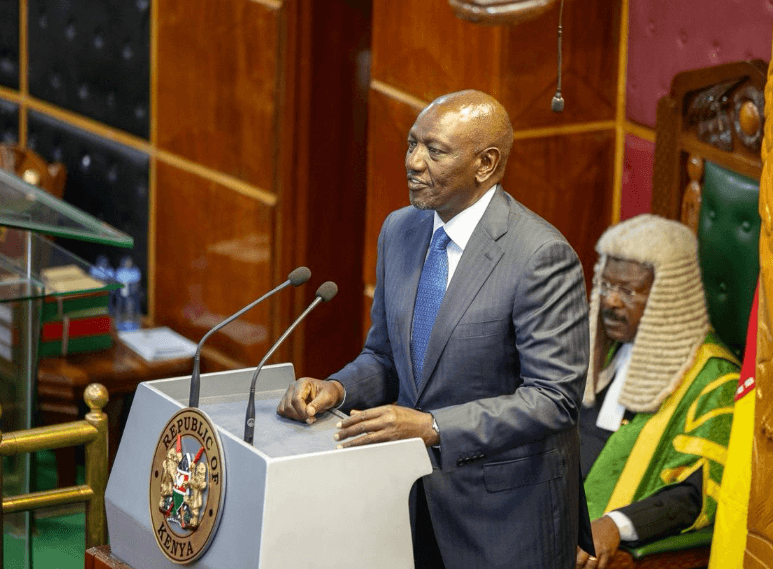The internet has seen explosive growth in Africa in recent years.
This growth is due to a number of factors, including increasing mobile penetration, falling data prices, and government initiatives to improve internet access.
As a result of this growth, the internet is playing an increasingly important role in African societies, transforming education, business, and social interactions.
Web 1.0, the first stage of internet development in the early 1990s, was developed and exhibited static pages.
Back then, not so many people were using the internet and hence when accessing the web, there was nothing behind it… click next and it takes you to the next page.
Web 1.0 was basically read-only, company based because corporations used to do web hosting, had owned content and information was peer to server.
Web 2.0 is the evolution of Web 1.0 into what we have today, which is more dynamic and interactive.
Here, the web user is the product on the internet and corporations started taking control of Web 2.0.
With sites like Facebook and Twitter, for example, content can be viewed on a large scale via mobile devices and social media sites like Pinterest and Instagram.
Daniel Moenga, an AI/ML expert, software developer and blockchain specialist while speaking to the Star said that Web 2.0 adversely gave birth to machine learning.
This was specifically to understand a user's patterns and predict what a user, based on the IP address was interested in.
“When a person accesses the internet, their data is captured and stored on a specific server controlled by a corporate. This data is sold to different advertising companies,” he said.
Moenga who is also Chief Technical Officer at Veezaviz said that different companies collect data from different users on their websites.
“When you access a specific website, your information is collected on how much time you have spent on it, what exactly are you clicking, are you sharing the website with other people and what exactly are you searching for,” he said.
Since its inception in the early 2000s, Moenga said that Web 2.0 brought about the centralization of data whereby the person owning the server is the one controlling the data.
Today’s Web 3.0 is a hybrid of Web 2.0 and Web 1.0 features.
It is still interactive but also incorporates certain static websites embedded on the blockchain, and it is decentralized.
“Africa is ready to embrace Web 3.0 technology and Kenya should not be left behind,” Moenga said.
Leveraging availability of the blockchain technology, Moenga said, together with the development of Web 3.0 will offer people freedom.
“Web 3.0 will be different because it will have a decentralized structure where data is stored on computers all over the world instead of just one company’s servers,” he said.
The different computers act as servers that exist on a specific blockchain platform.
According to the United Nations Conference on Trade and Development (UNCTAD) report, Kenya takes first place as the country in Africa with the highest number of crypto holders.
To be specific, digital currency ownership in Kenya is 8.5% of the population, and it is the highest in Africa and the fifth highest globally.
This is followed by South Africa in second place in Africa and eighth globally, with 7.1% of the population owning or holding cryptocurrencies in 2021.
Central banks and financial institutions currently control the inflow and outflow of money and ledgers are not in the public domain.
The rise of technologies such as public ledgers and storage on blockchain will allow for data decentralization.
It will also create a transparent and secure environment, overtaking Web 2.0’s centralization, surveillance and exploitative advertising.
Decentralized infrastructure and application platforms will displace centralized tech giants, and individuals will be able to rightfully own their data.
“A lot of Kenyan developers face the challenge of obtaining APIs,” Moenga said.
“Once someone sets up a company, website or a start-up, they normally have to partner with a company that offers a financial solution so that they can process payments such as M-Pesa, iPay Africa and Stripe.”
He said that if businesses can be integrated with blockchain whereby the API is less complicated, companies and customers can create wallets on a specific blockchain platform to ease money transactions.
It becomes easy to trace and validate payments that were transacted from one individual to another as they are real-time and visible in the public domain.
“Payments are in form of tokens also referred to as digital fiat currencies such as bitcoin, Ethereum, Polkadot, Dogecoin and even USDT,” Moenga said.
He also said that this technology pushes for taking away data from corporations and giving it to the community.
A lot of people’s data is being sold to a lot of companies for marketing purposes majorly and they are not aware.
“Data should be considered a human right, Web 3.0 tech is giving you that protection, right and freedom,” he said.
As part of Web 3.0, NFTs (Non-fungible tokens) is a way of ensuring that data is copyrighted to the owner of the information.
“NFTs are digital assets that exist as an original copy. On Web 3.0, there exist only two original owners; one who created it before it existed and the one who bought it,” Moenga said.
“With NFT if you purchase and pay for it with any cryptocurrency then hold, you can later sell it at a higher value.”
However, due to the excessive freedom that the web 3.0 technology will exhibit, there will be a lack of censorship hence cases of cyberbullying, online fraud and scamming as well as the spread of false information will be a challenge.
















![[PHOTOS] Betty Bayo laid to rest in Kiambu](/_next/image?url=https%3A%2F%2Fcdn.radioafrica.digital%2Fimage%2F2025%2F11%2F3b166e2e-d964-4503-8096-6b954dee1bd0.jpg&w=3840&q=100)
